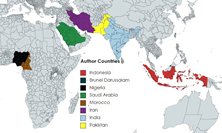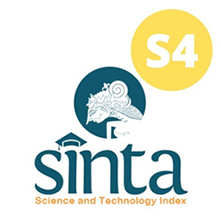Exploration of Digital Filter on Cardiac Monitor through Carotid Pulse and PCG (Phonocardiogram)
Abstract
Heart defect early detection and correct diagnosis have become important healthcare priorities. Tools for monitoring cardiac problems are constantly being developed, with the PCG (Phonocardiogram) and Cardiac Monitor via Carotid Pulse essential for heart evaluation. Although condenser microphones embedded in electric stethoscopes have been used in past research as PCG sensors, more advancements are still required to reduce received noise. This study investigates how well a Chebyshev type-II digital filter works to reduce noise on the cardiac monitor using PCG and carotid pulse. The PCG sensor is the GY-MAX 9814 module, which is interfaced with an Arduino Uno microcontroller. Matlab, Visual Studio (used as a graph viewer), and Doppler Simulator (used as a phantom cardiac signal) are used. SNR (Signal to Noise Ratio) is used in the analysis to assess the effectiveness of two digital filter orders. The average SNR value for the Doppler Simulator is 0.001404 dB at order 2, however, it climbs dramatically to 18.60023 dB at level 4 according to the results of the SNR analysis. The average SNR value in human signals is 11.50718 dB before the filter, 0.001404 dB after the post-order 2 filter, and 12.0009 dB after the post-order 4 filter. According to the results, the digital filter of order 4 is more effective in reducing noise. This study highlights the possibility of an order 4 digital filter to improve the Cardiac Monitor through PCG and Carotid Pulse. Through enhanced signal quality, the creation of this gadget holds the potential for streamlining the identification of cardiac problems. Future developments in this technology could lead to more precise and trustworthy cardiac exams, which would help with early diagnosis and treatment of cardiovascular health.

This work is licensed under a Creative Commons Attribution-ShareAlike 4.0 International License.
Authors who publish with this journal agree to the following terms:
- Authors retain copyright and grant the journal right of first publication with the work simultaneously licensed under a Creative Commons Attribution License that allows others to share the work with an acknowledgement of the work's authorship and initial publication in this journal.
- Authors are able to enter into separate, additional contractual arrangements for the non-exclusive distribution of the journal's published version of the work (e.g., post it to an institutional repository or publish it in a book), with an acknowledgement of its initial publication in this journal.
- Authors are permitted and encouraged to post their work online (e.g., in institutional repositories or on their website) prior to and during the submission process, as it can lead to productive exchanges, as well as earlier and greater citation of published work (See The Effect of Open Access).











